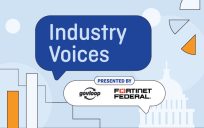This is the fourth blog post in a series of blog posts and podcasts talking through the recent GovLoop Guide to Workforce Planning. Be sure to take a listen to the podcase below and view the guide. You can find more HR resources by visiting the GovLoop Guide to Workforce Planning Homepage.
This week we highlight the section of the workforce planning guide, “Be Proactive – Develop a Workforce Plan.” Through the past couple weeks, we’ve highlighted select sections of the guide, you’ve learned how to think through strategic planning and how to identify steps to prepare for the future workforce. This week, we’ll spend some time advising how you can be proactive, and take on some strategies to close the gap between your needs and available resources. Although all aspects of workforce planning are important, within the guide, we pay special attention to implementation strategies.
Throughout the report we identify strategies and processes developed by the North Carolina Office of State Personnel. I’d highly recommend you check out their page, as it is a great resource for public sector professionals. Many agencies are faced with the challenge of closing organizational gaps left by retirees or changing operational needs. There are dozens of strategies that can be implemented by agencies; three common initiatives that we highlight in the guide are recruitment, training and leadership programs, and retention/succession planning.
One of the challenges is that competition for top talent is cutthroat. A recent study from National Association of Colleges and Employers (NACE) shows a decrease in interest in working for the federal government from college graduates. The survey found that only 2.3% of respondents planned to work for the federal government after graduation. Eighteen percent (18%) of respondents are seeking employment in the non-profit sector, and 30% are looking for employment in the private sector. The remaining respondents desired to attend graduate school or explore other options.
One important statistic that stood out to me was that 18% of former federal interns plan on working for the federal government. The NACE study sites that the number of students planning to enter into public service has been in decline over the last two years. The report cites that in 2008, 8.4% of respondents desired to work in government at the local, state or federal level. The number was at 12% in 2009, 7.4% in 2010, 6% in 2011.
In many of our guides, GovLoop likes to have an “In Focus” section, which we identify a great government case study or program. In the workforce planning guide, GovLoop focuses on the IRS Recruitment Office as an innovative and leader in recruiting the next wave of public sector professionals. The IRS has a lot of great initiatives, and I’d encourage you to check out some of the links I’ve shared below.
So what makes the IRS so great? I think it’s the depth of channels and attention to detail; they are able to reach so many different potential employees, and do a great job telling the story of what it is like to work at the IRS. The IRS has a great web page for prospective employees. The IRS uses dozens of social channels to help recruit employees into the federal government.
The IRS has three different twitter accounts used to help in recruitment. The accounts discuss IRS opportunities and the benefits of working at the IRS. They also have a Facebook page that is used for career questions, provides updates and as a way to connect with prospective employees. YouTube is another social channel that the IRS is using for recruitment. The IRS uses videos to help showcase how an employee can build a career at the IRS, share agency profiles, and develops recruitment profiles. This is a terrific way to help recruit employees to the IRS. The IRS also uses LinkedIn as a way to help people see what it is actually like to work at the IRS. The IRS also uses GovLoop, to help showcase the inside story of the IRS.
- Follow IRScareers
- Follow IRSrecruiter59
- Follow RecruitmentIRS
- Friend IRS Careers on Facebook
- Subscribe to the IRS Careers YouTube Channel
- Visit us on LinkedIn
- Julie IRS Recruiter GovLoop Blog
- Visit the IRS Career Island
Training and Leadership Development Programs
Leadership programs, like training initiatives, are important to retain employees, develop talented employees, and keep morale high within agencies. GovLoop offers dozens of free trainings throughout the year for public sector professionals. These trainings are typically only an hour long and are great ways to help employees grow professionally. There are numerous leadership and development programs for public sector professionals to take. OPM has a great list of government agencies leadership programs. One program to highlight is the Foundations in Leadership: Administrative and Business Skills, which is available for Department of Interior employees GS – – through GS – 12.
Retaining and Succession Planning
No workforce program would be complete without a plan to retain an organization’s very best employees. Monetary incentives are only part of the equation. In this section, we talk through one of my previous blog posts on GovLoop, 10 Strategies How to Manage Talent In Federal Agencies.
The ten strategies are only a starting point, what is clear is that there are a lot of different ways to approach talent management. What also seems apparent that talent management is a two-way street. The employee needs to be willing to grow and learn, even when things aren’t perfect and work is tough. Everyone needs to attach themselves to the organization and its mission, and make a commitment to the team – in the end by making a commitment to the agency; all professional, personal and organizational goals can all be met.
Mentoring Programs
Mentors often provide valuable insights and institutional knowledge about an organization to a younger workforce. By working with a mentor, new employees are given new perspectives on organizational issues and are provided the opportunity to grow professionally and learn from their mentor’s experiences.
There are also countless examples of fantastic mentoring programs in which people opt into a mentorship agreement – these programs are largely successful because those opting in are passionate about taking a mentee, and those seeking a mentor are equally motivated to make the relationship successful. GovLoop have had enormous success with our mentorship program here at GovLoop. Be sure to view 10 traits of a great mentor, and you can also explore this section further within the guide.
How to Get People Engaged – Motivation
The final section we discuss how to encourage morale, and how important morale is to growing employees and turning them into leaders. Be sure to check out a great post by Julie IRS Recruiter, Recruitment 411: Seven Simple Steps to Maintain Morale.
Next week we’ll release a podcast about the importance of performance management, and review of the guide. Until then, I’d love to hear your workforce planning stories, your challenges, and if you are using the GovLoop Guide, I am always looking for feedback on how to improve our product. We’re here to help you do your job better, so feel free to shoot me a note with some suggestions on what you liked, or maybe not so much.
 |
Oracle offers an optimized and fully integrated stack of business hardware and software systems that helps organizations overcome complexity and unleash innovation.. Check out their Optimize with Oracle group on GovLoop as well as the Technology Sub-Community of which they are a council member. |




Leave a Reply
You must be logged in to post a comment.